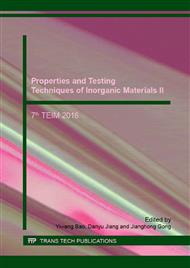p.537
p.542
p.547
p.553
p.558
p.564
p.569
p.576
p.581
Study on the Reduction of Radon Exhalation Rates of Concrete with Different Activated Carbon
Abstract:
Four different material of activated carbon, i.e., coconut shell, fruit shell, wood and coal, were used to be mixed with concrete, the radon exhalation rates of concrete then was measured. At the same time, the pore distribution of activated carbon and some performances of concrete were tested. The results show that coconut shell carbon has the best effect for reduction radon exhalation rates of concrete, fruit shell carbon comes second. The adsorption mechanisms of activated carbon towards the radon gas in the solid and in the air are similar. Activated carbon have less effect on the strength of concrete, however, they have greater influence on the constructability and durability.
Info:
Periodical:
Pages:
558-563
Citation:
Online since:
January 2017
Authors:
Keywords:
Price:
Сopyright:
© 2017 Trans Tech Publications Ltd. All Rights Reserved
Share:
Citation:


